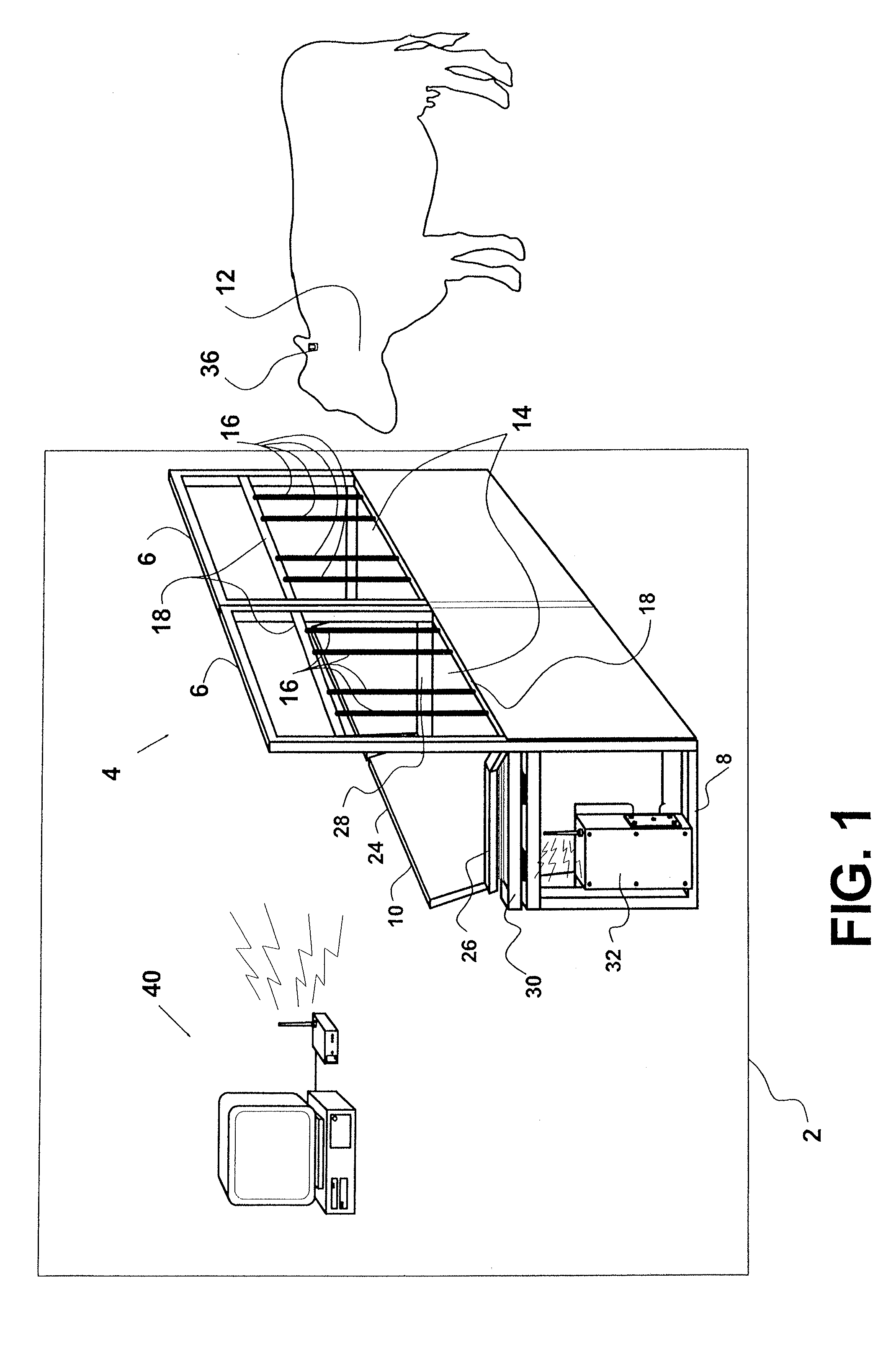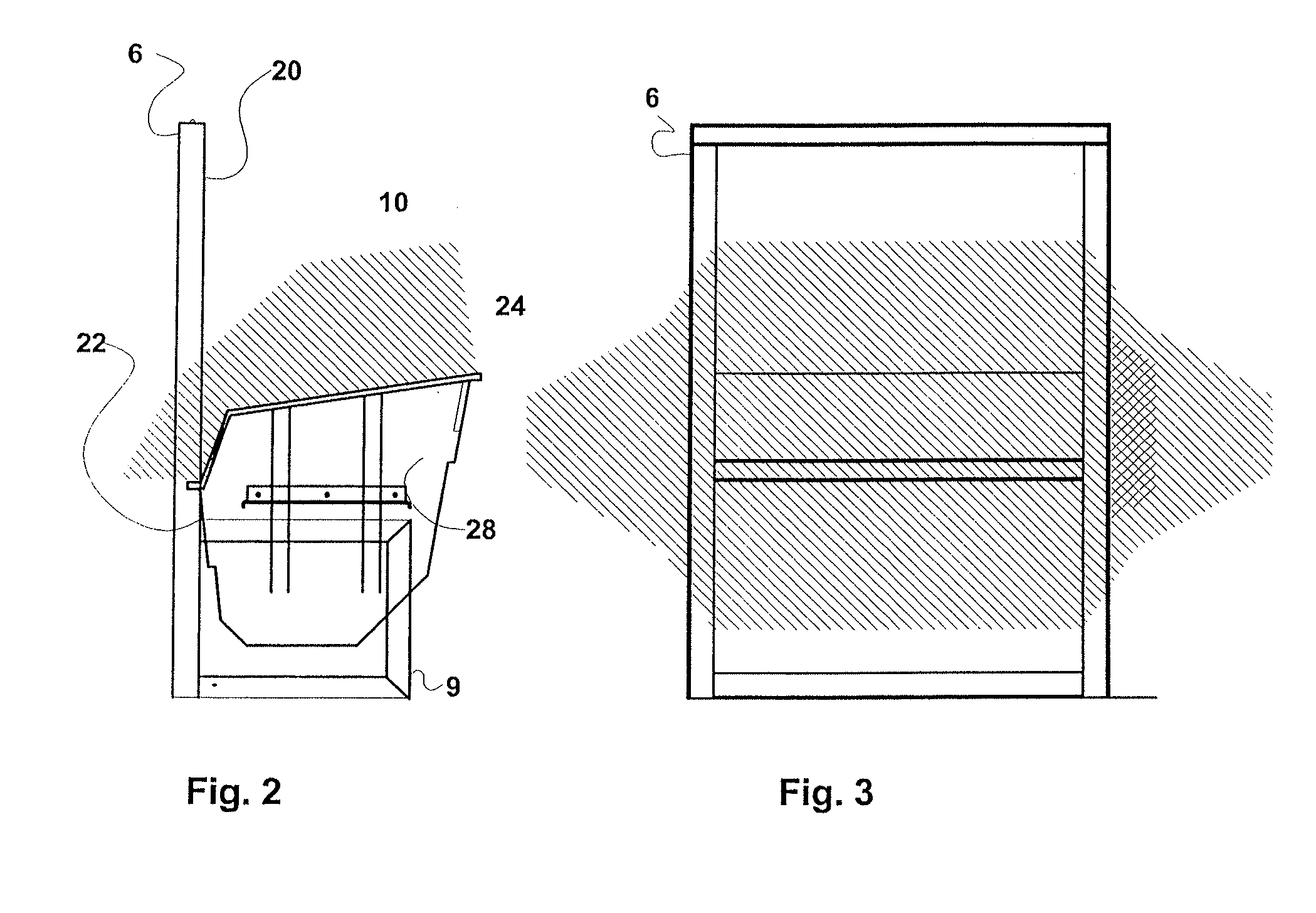Animal identification, measurement, monitoring and management system
a technology for which is applied in the field of animal identification, measurement, monitoring and management systems, can solve the problems of high system cost, inability to readily decipher the identification code of each individual reader/transmitter, and difficulty in reading multiple transponders using one reader/transmitter
- Summary
- Abstract
- Description
- Claims
- Application Information
AI Technical Summary
Benefits of technology
Problems solved by technology
Method used
Image
Examples
Embodiment Construction
[0053]Turning now to FIG. 1, a general description concerning the various components of the present invention will now be briefly discussed. The generally comprises a consumption station 4 including a front panel 6 supported by a base frame 8. The front panel 6 is arranged so as to limit access to the feed trough 10 such that only one animal 12, at a time, is able to extend its head through the opening 14 in the front panel 6 and consume feed from the feed trough 10. As generally shown in FIG. 1, the base frame 8 supports the front panels 6 and the feed trough 10 in relation to each other while maintaining the feed trough 10 in such a manner that the weight of the feed trough 10 can be constantly and consistently measured with minimal interference from the animals 12.
[0054]As is conventional in the art, the opening 14 in the front panel 6 is defined by a pair of spaced apart vertical neck bars 16 and a pair of spaced apart horizontal neck bars 18 that are both spaced apart from one ...
PUM
 Login to View More
Login to View More Abstract
Description
Claims
Application Information
 Login to View More
Login to View More - R&D
- Intellectual Property
- Life Sciences
- Materials
- Tech Scout
- Unparalleled Data Quality
- Higher Quality Content
- 60% Fewer Hallucinations
Browse by: Latest US Patents, China's latest patents, Technical Efficacy Thesaurus, Application Domain, Technology Topic, Popular Technical Reports.
© 2025 PatSnap. All rights reserved.Legal|Privacy policy|Modern Slavery Act Transparency Statement|Sitemap|About US| Contact US: help@patsnap.com



